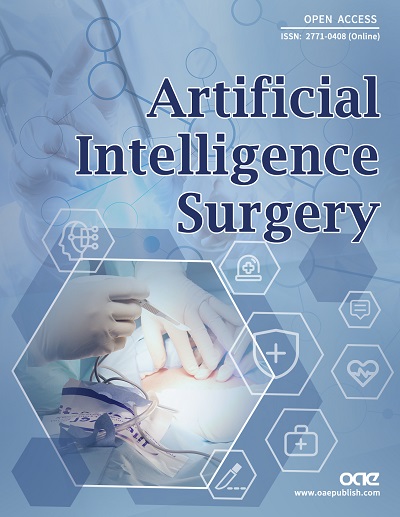REFERENCES
1. de Weerd M, Greving JP, Hedblad B, et al. Prevalence of asymptomatic carotid artery stenosis in the general population: an individual participant data meta-analysis. Stroke 2010;41:1294-7.
2. Dossabhoy S, Arya S. Epidemiology of atherosclerotic carotid artery disease. Semin Vasc Surg 2021;34:3-9.
3. Shah J, Vyas A, Vyas D. The history of robotics in surgical specialties. Am J Robot Surg 2014;1:12-20.
4. Chitwood WR Jr, Wixon CL, Elbeery JR, Moran JF, Chapman WH, Lust RM. Video-assisted minimally invasive mitral valve surgery. J Thorac Cardiovasc Surg 1997;114:773-80; discussion 780-2.
5. Damiano RJ Jr, Ehrman WJ, Ducko CT, et al. Initial United States clinical trial of robotically assisted endoscopic coronary artery bypass grafting. J Thorac Cardiovasc Surg 2000;119:77-82.
6. Siemens Healthineers. University Hospital Giessen performs first minimally invasive, robotic-assisted coronary intervention in Germany. Available from: https://www.siemens-healthineers.com/press/releases/pr-corpath-pci-ukgm.html [Last accessed on 26 Apr 2024].
7. Perera AH, Riga CV, Monzon L, Gibbs RG, Bicknell CD, Hamady M. Robotic arch catheter placement reduces cerebral embolization during thoracic endovascular aortic repair (TEVAR). Eur J Vasc Endovasc Surg 2017;53:362-9.
8. Riga CV, Cheshire NJ, Hamady MS, Bicknell CD. The role of robotic endovascular catheters in fenestrated stent grafting. J Vasc Surg 2010;51:810-9; discussion 819-20.
9. Crinnion W, Jackson B, Sood A, et al. Robotics in neurointerventional surgery: a systematic review of the literature. J Neurointerv Surg 2022;14:539-45.
10. Page MJ, McKenzie JE, Bossuyt PM, et al. The PRISMA 2020 statement: an updated guideline for reporting systematic reviews. BMJ 2021;372:n71.
11. Whiting PF, Rutjes AW, Westwood ME, et al. QUADAS-2 Group. QUADAS-2: a revised tool for the quality assessment of diagnostic accuracy studies. Ann Intern Med 2011;155:529-36.
12. Consumers and Communication Group resources for authors. Available from: https://cccrg.cochrane.org/author-resources [Last accessed on 26 Apr 2024].
13. Weinberg JH, Sweid A, Sajja K, et al. Comparison of robotic-assisted carotid stenting and manual carotid stenting through the transradial approach. J Neurosurg 2020;135:21-8.
14. Sajja KC, Sweid A, Al Saiegh F, et al. Endovascular robotic: feasibility and proof of principle for diagnostic cerebral angiography and carotid artery stenting. J Neurointerv Surg 2020;12:345-9.
15. Jones B, Riga C, Bicknell C, Hamady M. Robot-assisted carotid artery stenting: a safety and feasibility study. Cardiovasc Intervent Radiol 2021;44:795-800.
16. Abbas R, Al Saiegh F, El Naamani K, et al. Robot-assisted carotid artery stenting: outcomes, safety, and operational learning curve. Neurosurg Focus 2022;52:E17.
17. Nogueira RG, Sachdeva R, Al-Bayati AR, Mohammaden MH, Frankel MR, Haussen DC. Robotic assisted carotid artery stenting for the treatment of symptomatic carotid disease: technical feasibility and preliminary results. J Neurointerv Surg 2020;12:341-4.
18. George JC, Tabaza L, Janzer S. Robotic-assisted balloon angioplasty and stent placement with distal embolic protection device for severe carotid artery stenosis in a high-risk surgical patient. Catheter Cardiovasc Interv 2020;96:410-2.
19. Costa M, Tataryn Z, Alobaid A, et al. Robotically-assisted neuro-endovascular procedures: single-center experience and a review of the literature. Interv Neuroradiol 2023;29:201-10.







